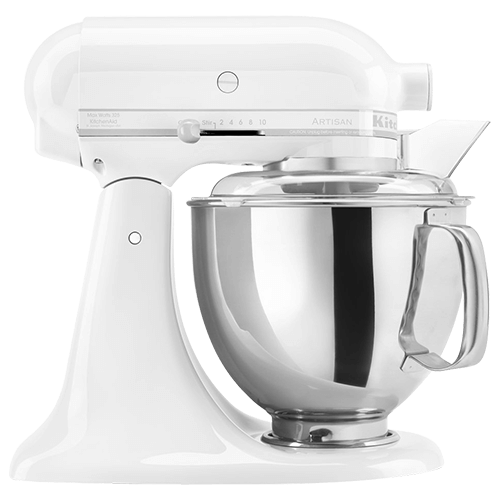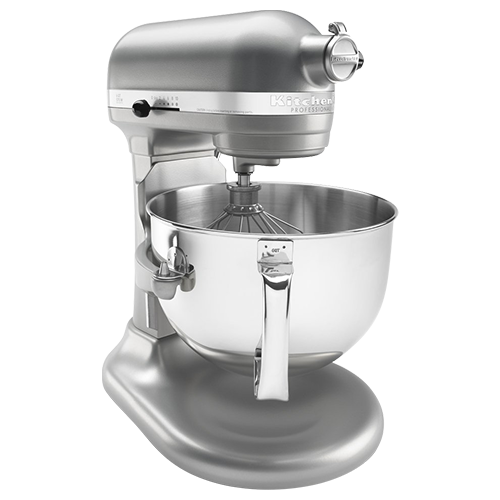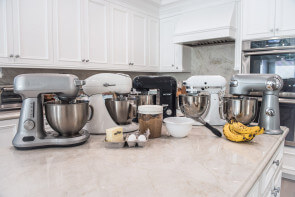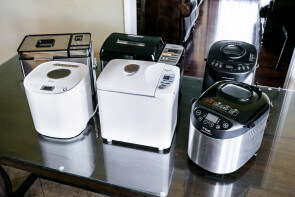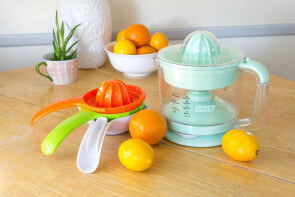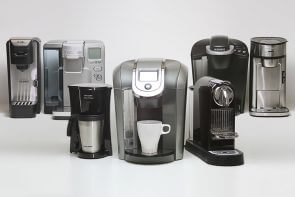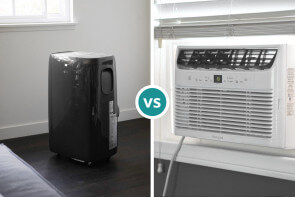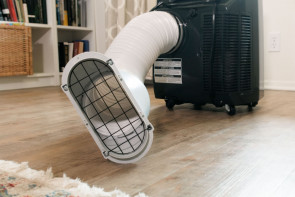
The Best KitchenAid Stand Mixers
We tested three of the most popular models of KitchenAid stand mixers and selected the KitchenAid – Artisan as the best for first-time bakers and bakers who want to bake more. It’s compact, has a powerful motor and is available in a cornucopia of colors that will match any kitchen’s design. If you have a large kitchen and bake in high volumes, the KitchenAid – Pro 600 is a powerhouse that can churn out several loaves of bread or up to 13 dozen cookies in a single batch.
Our Top Choices
We tested three of the most popular models of KitchenAid stand mixers and selected the KitchenAid – Artisan as the best for first-time bakers and bakers who want to bake more. It’s compact, has a powerful motor and is available in a cornucopia of colors that will match any kitchen’s design. If you have a large kitchen and bake in high volumes, the KitchenAid – Pro 600 is a powerhouse that can churn out several loaves of bread or up to 13 dozen cookies in a single batch.
Table of contents
Why buy a KitchenAid stand mixer?
Simply put, it’s the best. We rigorously tested five highly rated stand mixers, and the KitchenAid Artisan was the clear champion over the others. If you’re a daily baker or a holiday baker, any KitchenAid stand mixer is an essential appliance for your kitchen.
All KitchenAid stand mixers combine heavy-duty steel construction with a powerful motor. Depending on its size and wattage, a KitchenAid makes short work of any tedious baking task, such as blending thick cookie dough stuffed with mix-ins or kneading pizza dough.
Any KitchenAid stand mixer has been built to last a lifetime. We’ve worked with the KitchenAid Pro 600 for nearly 15 years, and it’s still churning out and humming along as well as the first day we flipped the on switch.
These are workhorses; and like the proverbial workhorse, they’re solid and heavy. The Artisan and the Classic — both are the compact, tilt-head style — weigh in at 23 pounds. The Professional is a hefty 29 pounds. So you really need to have some kitchen-counter real estate where the KitchenAid can live, since it’s too heavy to hoist it up to a cabinet.
Power hub
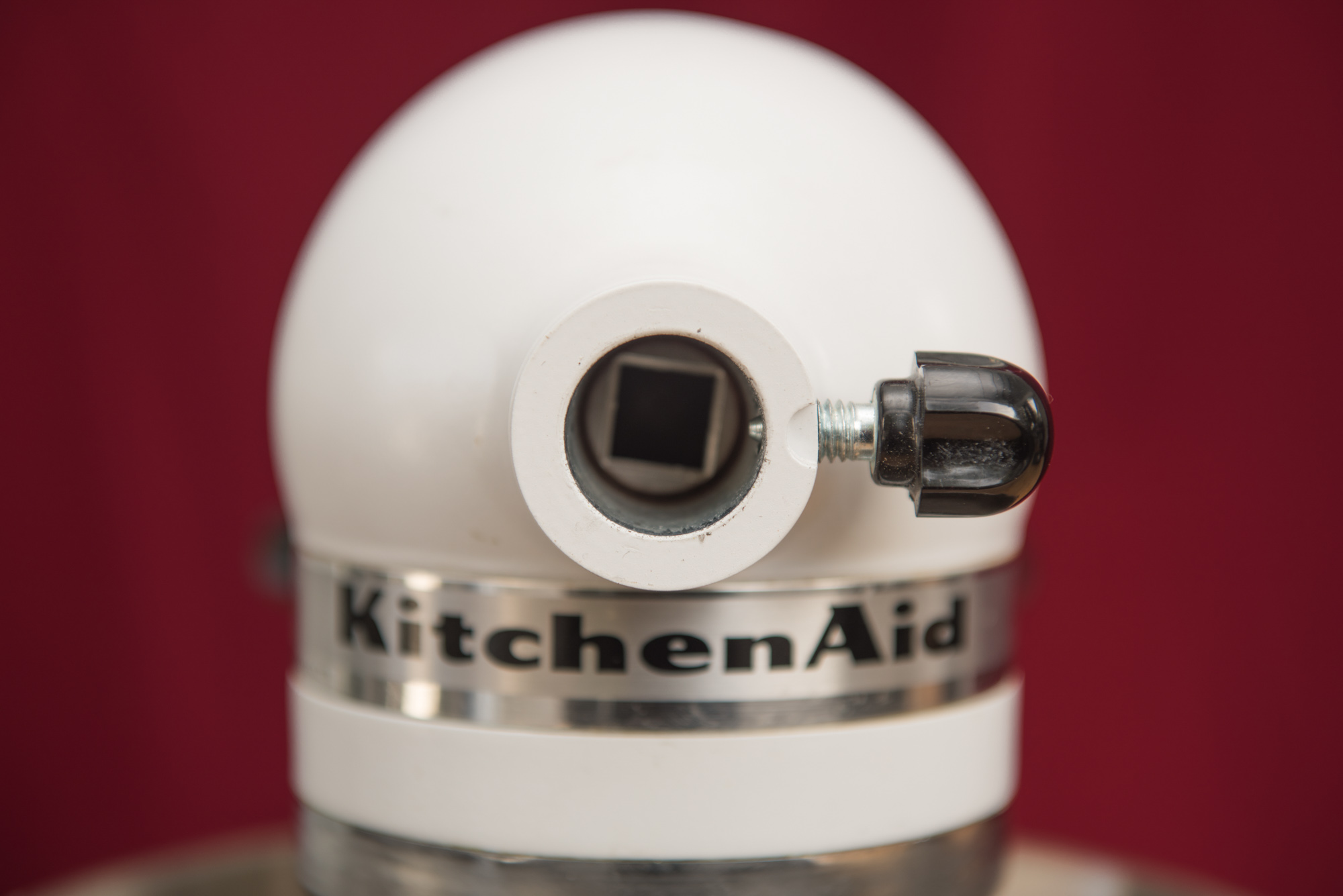
All KitchenAid stand mixers have a unique built-in that no other stand mixer has: a power hub. This portal on the mixer’s head allows you to plug in 15 attachments, ranging from a pasta roller to a spiralizer, like the spiralizers we reviewed, to an ice cream maker, one that’s smaller and just as functional as those we reviewed in our best ice cream maker article.
Finally, you’re probably aware that a KitchenAid stand mixer is more expensive than other stand mixers. You’ll spend between $200 to $325 on a KitchenAid stand mixer, but with all of the available attachments that can do practically any cooking-prep job, you’ll push your culinary skills to new levels.
Comparing the best KitchenAid stand mixers

KitchenAid has been manufacturing stand mixers for 100 years, and during that century, they’ve given several facelifts to their models. There are three core models that KitchenAid occasionally updates: the Classic, the Pro 600 and the Artisan. (KitchenAid also makes a very large Commercial mixer, but these are really intended for bakeries or home-baking businesses.)
Classic
The Classic Series has a tilt-head design, meaning the head of the mixer swivels back, which allows easy access to the mixing bowl. The Classic’s mixing bowl is 4.5 quarts and has no handle. The bowl is slightly tapered and locks into the bottom of the mixer’s stand. The Classic has 10 variable speeds controlled by a side lever.
The Classic has 275 watts and is a planetary-motion mixer, which means the attachments revolve while the bowl remains stationary. Although the Classic’s wattage is somewhat less than the Artisan and Pro 600, all KitchenAid stand mixers have been engineered to use wattage for creating exceptional torque — the force needed to rotate an object — which is particularly needed for kneading bread or pizza dough and mixing dense cookie dough.
The Classic has 59 touch points per rotation; every time the wire whisk, dough hook or flat beater (included with all KitchenAid mixers) revolves around the bowl, it will touch the bowl 59 times. The more touch points per rotation, the less you will need to scrape the sides of the bowl.
True to its name, the Classic is only available in two colors, white and silver.
Artisan
The Artisan has all of the same features of the Classic, but its power is boosted to 325 watts. The Artisan has a 5-quart tapered bowl with a handle that also locks into the stand. The same accessories are included, but the Artisan’s flat beater has a raised silicone edge, which virtually eliminates scraping the bowl. Like the Classic, the Artisan also has a 10-speed motor and 59 touch points per rotation.
If you’re looking to match your appliances with your kitchen, the Artisan comes in a veritable rainbow of 44 colors.
Pro 600
KitchenAid’s Pro 600 Series shares some core features with the Classic and Artisan models. It differs, however, in that it has a bowl-lift design. The 6-quart bowl latches onto two side arms and the back of the stand. A lever raises the bowl to the attachment; when mixing is complete, the bowl lowers back to the base.
The Pro 600 is also larger, heavier, and its wattage is amped up to 575. With 67 touch points per rotation, the wide whisk and flat beater (one-third larger than the Classic and Artisan) and the elongated dough hook miss nothing in the bowl.
How we tested
Since we already tested the Artisan in our stand mixer review, we repeated the same tests with the Classic and Pro 600.
Small batch whipping

Egg whites: For each mixer, we put two room-temperature egg whites into the bowl and started the mixer at its lowest setting. When the egg whites began to foam, we increased the speed to the highest level and timed how long it took for the egg whites to reach a meringue consistency.

Cream: The Artisan easily whipped one cup of chilled heavy cream to fluffy peaks. We repeated the test with the Classic and Pro 600 by whipping the cream at its lowest setting and gradually increasing to the highest and timed how long it took for the mixer to whip the cream.
Cake batter
We used “The Great British Baking Show” judge Mary Berry’s recipe for genoise, or sponge cake, which serves as the base for an assortment of iced and jelly-filled cakes. We made this recipe many times during our initial testing, and it’s especially good for showing how well (or poorly) the stand mixer whips the ingredients together to create a light and airy cake with a soft crumb.
Cookie dough
As we discovered from our prior tests, cookie dough can cause havoc with almost all stand mixers. Depending on the shape of the bowl and length of attachments, oftentimes mixins just aren’t mixed in enough. This failing was more than apparent with the Cheftronic – SM986 and Cuisinart SM-50 , both of which left mixins in the bottom of their deeply tapered bowls and short attachments.
The recipe we used is a dense dough jammed full with chocolate chips, peanuts and M&Ms. This test really showcases the motor’s ability to create the torque needed to thoroughly blend these heavy ingredients into a cohesive dough.
Pizza dough
This is the most challenging test of all. It’s a standard recipe for pizza dough that we’ve made dozens of times. Earlier models of stand mixers had an extenuated dough hook that was curled like a pig’s tail. The latest models have dough hooks that are about one-third shorter and have a more traditional hook shape.
In our previous tests, only the Artisan blended and kneaded the dough effortlessly. The other mixers struggled to make a cohesive dough with the new dough hook, and the strain on their motors caused the mixers to shake and rattle like the Northridge Earthquake.
Best Overall: Artisan

The 5-quart, tilt-head KitchenAid – KSM150PS Artisan stand mixer won best overall in our review of stand mixers, and it’s our top pick again. The Artisan is the most popular of KitchenAid’s stand mixers, and it’s easy to understand why. The Artisan is about 20 percent smaller than the Pro 600, and the tilt-head design makes the mixer more compact so it can fit underneath most kitchen cabinets.
At 375 watts, the Artisan has plenty of power to tackle bread, pizza and chunky cookie dough. The usual attachments are included: A wire whisk, flat paddle and dough hook. The flat paddle and dough hook are nylon-coated for easy cleaning.
We found the Artisan’s pouring shield especially useful when we added flour to the pizza dough. It fits over the mixing bowl and allows you to add dry or wet ingredients while the mixer is mixing. The pouring shield eliminated spills and concentrated the flour into a spout, which the dough hook efficiently turned into the vortex of the mixture.
The Artisan has a slightly tapered stainless steel bowl, and its attachments have been designed specifically to reduce the need for scraping ingredients down the sides of the bowl.
The Artisan performed perfectly in all of our tests. It whipped the egg whites and cream to firm peaks in one minute and smoothly blended the cake batter, which baked light, airy and delicate. The Artisan had no problems mixing together the cookie dough, although there were a few M&M bits in the bottom of the bowl. The hook attachment is less curlicue than the Pro 600’s, but the Artisan nevertheless mixed and kneaded an elastic ball of pizza dough in five minutes.
The Artisan is so easy to use you’ll find yourself baking like a professional in no time. Like all three KitchenAid stand mixers, the Artisan is expensive. But if you’re new to baking or you’re someone who wants to bake more than cupcakes and Christmas cookies, the Artisan is an investment you should make.
Key takeaways:
- The KitchenAid Artisan is a tilt-head-style stand mixer and compact enough to fit under most kitchen cabinets.
- The Artisan has plenty of power to handle dense bread and cookie dough.
- It’s available in 44 colors, which you can match with other appliances and your kitchen’s design.
- The Artisan is fast, easy to use and will inspire you to bake more.
Best for large volumes: Pro 600
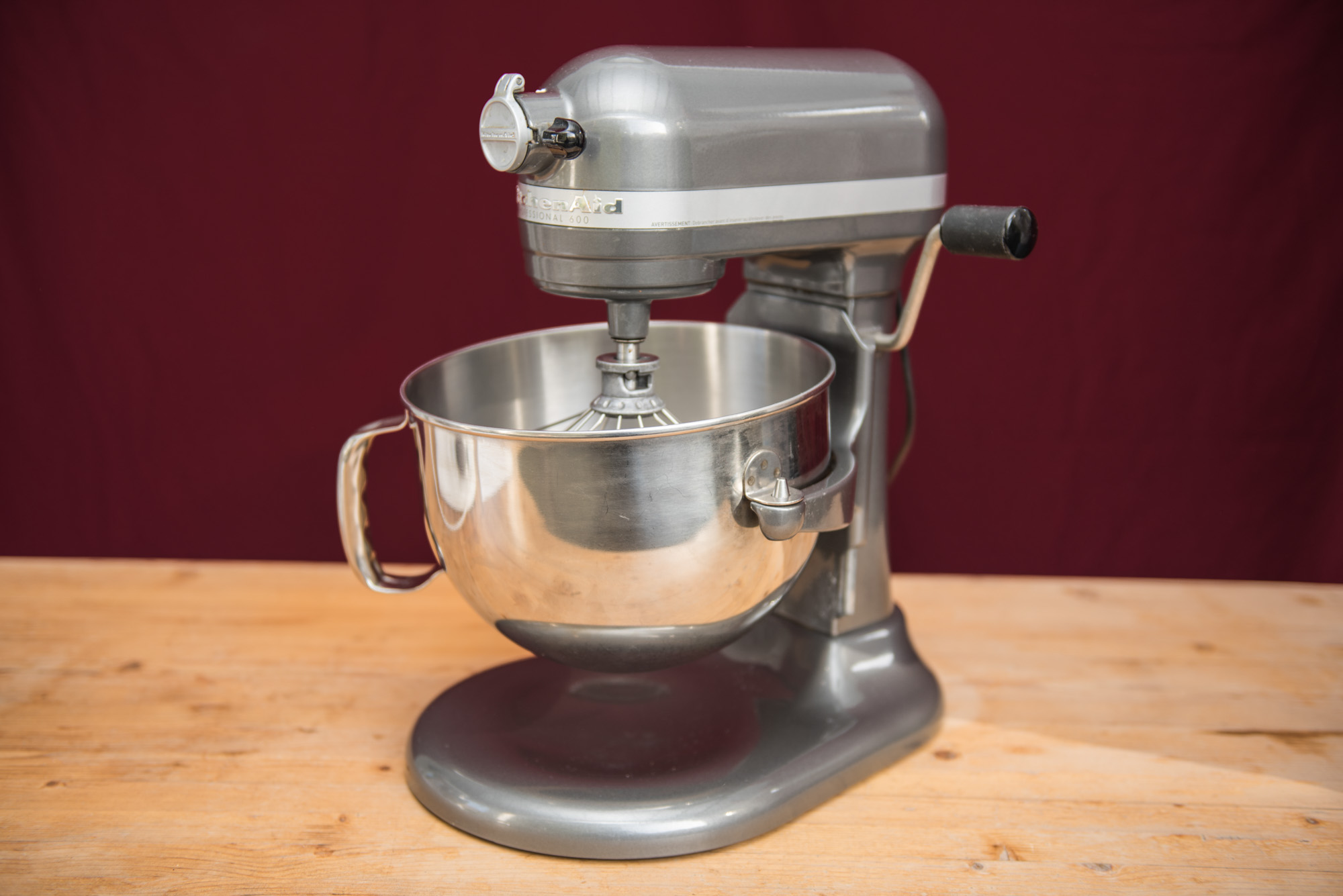
If you’re an ardent baker and an all-day baking binge is a regular past time, then the KitchenAid – Pro 600 is your best choice. It’s only about $50 more than the Artisan, but we feel the substantially increased power, rock-solid construction and excellent ease of use is worth that small difference in price.
As noted earlier, the Pro 600 is a big piece of machinery. It’s made entirely of metal, so it’s quite heavy — 29 pounds — and once you’ve unpacked the Pro 600, it’s not going anywhere. Look elsewhere if your kitchen counter space is limited.
Like all KitchenAid stand mixers, the Pro 600’s 575-watt motor has direct drive transmission, which means that its system of (all-steel) gears directly transfers power to whatever you’re mixing in the bowl. There’s less power consumption, and it mixes everything faster.
The proof, of course, is in the pudding — or the cake batter. The Pro 600 beat the other two KitchenAid stand mixers by 15 to 20 seconds in every challenge, due, in part, to its wire whisk and flat paddle being one-third larger. When the bowl is lifted into place, the attachments touch the bottom of the bowl and the sides. With its 67 touch points, every last ounce of ingredient is whisked or beaten.
The results? Egg whites were beaten to meringue consistency in 55 seconds, the cream was fluffed to peaks in a minute. The cake baked light and airy with a delicate and moist crumb, and the cookies had a cake-like texture, which made us want to eat the entire batch in one sitting. (We restrained from doing so, barely.)

The Pro 600’s dough hook recalls what Captain Hook wore at his wrist. Its elongated, curlicue shape reaches the bottom of the bowl, so when we started the mixer at its lowest setting, the hook gently mixed the ingredients with no splatter. We increased the speed to 2 (there are 10 levels) and watched in amazement how the hook gathered everything together into a dough ball. Not once did we need to scrape the sides of the bowl.
We increased the speed to 3 and allowed the mixer to do its work, kneading the pizza dough until it was smooth and elastic. It really doesn’t get easier. As we did in our prior tests — and you shouldn’t do this at home — we increased the speed to its highest level while the mixer was kneading the dough. The bowl vibrated, but the heavy-metal stand held its ground and stayed in place.
KitchenAid intuited that most people will not store the Pro 600 in a cabinet, and so they’ve designed them in 22 different shades to fit any kitchen’s color scheme. If you prefer a vintage look, a tempered-glass mixing bowl is available.
The Pro 600 is the most expensive of the three KitchenAid stand mixers. The Pro 600 won’t fit everyone’s budget, and if you don’t have spacious countertops, you should consider the Artisan instead.
Key takeaways:
- The KitchenAid – Pro 600 is a sturdily constructed, high-power kitchen workhorse and makes short work of any baking mixing task.
- Its 6-quart bowl allows you to make several loaves of bread or up to 13 dozen cookies in a single batch.
- The Pro 600’s bowl and attachments are designed to virtually eliminate any hand-mixing or scraping of the bowl.
- It’s the most expensive of the KitchenAid mixers we tested, but if you bake everyday, it’s a worthwhile investment. The Pro 600 is built to last for years.
KitchenAid’s Budget Model: Classic

The KitchenAid – K45SS Classic is the least expensive stand mixer in the KitchenAid line. It’s well-made and performed almost as well as the Artisan. However, in our review of stand mixers, we recommended the Hamilton Beach – 63232 as an alternative to the Artisan. Since it’s about $25 less than the Classic and on a par with the Artisan, if you’re looking for a budget-priced stand mixer, consider the Hamilton Beach.
The Classic has 275 watts and at 4.5-quarts, its bowl is slightly smaller than the Artisan. It has the same attachments, but it lacks a splatter shield. (We checked KitchenAid’s website, and a separately purchased splatter shield for the Classic is not available.) In many respects, the Classic is identical to the Artisan; however, we did notice some minor differences in its performance.
The Classic whipped the egg whites and cream about 15 seconds slower, which is hardly a deal breaker. However, at its highest speed, the motor fluctuated and seemed to slow down for a second. We tested this several times, and the slight fluctuation was consistent. Since we only tested one model of the Classic, this issue might pertain only to the model we tested.
The Classic’s flat beater doesn’t have the silicone edge that the Artisan has, so it couldn’t reach all of the ingredients. This was the only KitchenAid mixer that made us scrape the bowl. We mixed ingredients thoroughly, but the cake rose unevenly with divets on the surface. Minor discrepancies can always happen in baking, but the cake’s texture was noticeably less airy and light.
The cookies mixed together quickly (42 seconds), but we couldn’t increase the speed past level 3 without the ingredients splattering. When we removed the dough, about one-quarter cup of M&Ms were left behind in the bottom of the bowl. The pizza hook was just as effective as it was in the other models, and the Classic produced an elastic dough in a few minutes.
The bottom line
You really can’t go wrong buying a KitchenAid stand mixer. They’re solid, built to last and can perform heavy-duty mixing, blending, whipping and kneading in a few effortless minutes. For someone who enjoys baking on a weekly or even daily basis, KitchenAid – KP26M1X Pro 600 is your best bet for handling high-volume baking.
If you’re a first-time baker or a seasoned professional, the smaller, less-expensive KitchenAid – KSM150PS Artisan has plenty of power for both daily and occasional baking. The Artisan matches the Pro 600’s performance, but its tilt-head design makes it more compact so it can fit many kitchen-counter spaces.
Best Overall: KitchenAid - Artisan
A perfect performer in all of our tests, the Artisan is solidly built, multi-functional, and with so many colors to choose from, pretty to look at it on your kitchen countertop. With all of the available attachments, the Artisan isn’t just an appliance, it’s a kitchen assistant.
More Reviews
Admetior - T837AH
The Best Dry Food Storage Containers
Progressive - Prepworks
KitchenAid - KSM150P
Breville - BHM800SIL
Zojirushi - BB-PAC20
Toshiba - TL1-AC25CZA(BS)
Dash - JB065AQ
The Best Single-Cup Coffee Makers
Keurig - K-Elite
LEM Products - 1152


